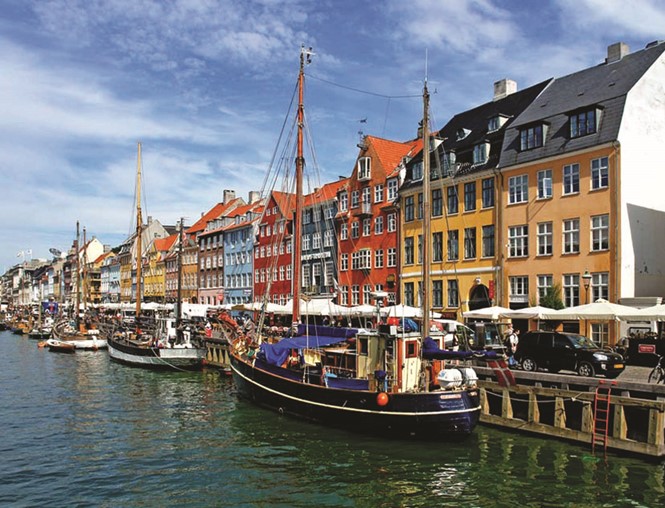Place branding: Denmark

Denmark has crafted its place brand on the very things that make it one of the world’s happiest countries: collectivity, egalitarianism and positivity. Amy Sandys reports on its cultural and arts heritage
In any league table charting countries with the happiest population, Denmark will inevitably emerge near, if not at, the top. According to the country’s tourist board, VisitDenmark, its first position in the 2016 World Happiness Report is down to, “A good combination of good healthy life expectancy, high GDP and high levels of social support.” And, as Denmark enjoys a rapid uptake in its tourist figures, bolstered by the promise of picturesque harbour fronts and literal smorgasbords of Danish delicacies, its cultural institutions shift to reflect the country’s public-led mindset. Through cohesive yet idiosyncratic branding of its attractions, Denmark’s place making is based on a future-facing vision which encapsulates the country’s unique Nordic identity.
London-based brand agency, Jane Wentworth Associates (JWA) is firmly involved in repositioning Denmark’s arts- and heritage-based attractions. Its first project, almost five years ago, was developing a new strategy for the ‘Statens Museum for Kunst’ (SMK) – or National Gallery of Denmark. More recently, the JWA team has worked on the Natural History Museum Denmark. And, says Jo Marsh, director and consultant at JWA, a common thread runs through Denmark’s local approach to rebranding global institutions, “Denmark is a really small nation of four million people, but there’s absolutely no lack of ambition.”
Yet, for Denmark, local roots must shine through the global approach. The Natural History Museum in Copenhagen, on which JWA is currently working, has a collection spanning almost 400 years. The institution recognises that while its offerings will no doubt attract international attention, the strong Danish sense of belonging is integral to maintaining an atmosphere of cultural integrity. And, says Marsh, this has informed the way the country has approached its impressive increase in tourist numbers over the past decade. “[Denmark has] a whole strategic framework around something called ‘localhood,’ which is actually all about its tourism strategy and the fact that international tourists don’t just want to skate along the surface anymore – they almost want to become local citizens,” says Marsh. By harnessing a relationship of mutual understanding, which benefits tourism through a citizen-focused approach, Denmark’s, inherent sense of collective living is boosted – while pertaining to its vision of being country of global citizens.
And an open-minded yet locally rooted approach to place branding reflects in Denmark’s inside-out employee culture. When JWA redesigned SMK’s brand strategy, it modernised the gallery’s identity and attracted new visitors, while retaining SMK’s collective internal brand culture. The agency worked with SMK’s employees to gain insight into how best to position the gallery. Marsh says,“If you don’t involve your staff with developing your brand, then you’ll just end up with confusion and frustration. And this will have a significant impact on how you are perceived externally.”
The ‘hygge’ approach that Danes apply to everyday life is so frequently cited that it has become the nom de jour for making the most out of any given situation. A collective mindset, ‘can-do’ attitude to life and egalitarian welfare systems all contribute to the socioeconomic positivity emanating from the small country. Marh says, Denmark’s place brand works because it is a country unafraid to accept its place in the world while developing an identity based on a social climate of welcoming.
“I think, politically, the message is people are quite uncomfortable about globalisation and that’s becoming globalisation turning into nationalism,” says Marsh. “What could be really exciting is to not fear the difference in each other, but to use the cultural organisations to try and nd the connections.”












